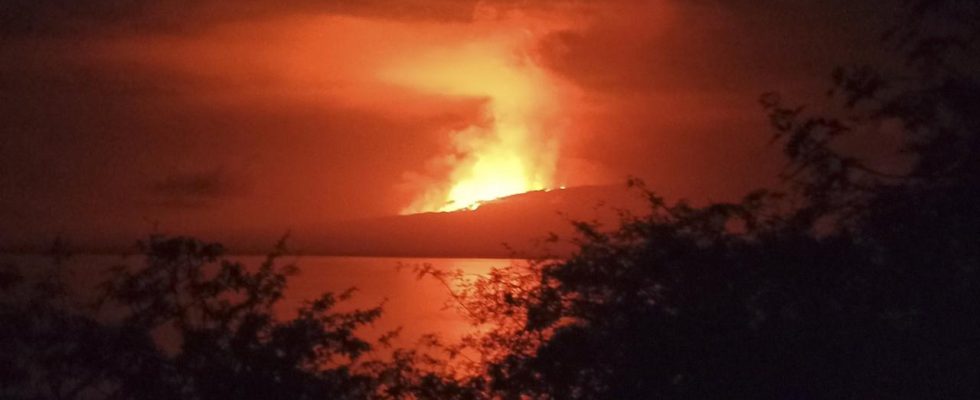A volcano has erupted on the uninhabited Galápagos island of Fernandina, creating an impressive natural spectacle. The island is home to various animal species, including iguanas, penguins and flightless cormorants.
A volcanic eruption in the Galapagos Islands has led to a spectacular natural spectacle. The eruption of the La Cumbre volcano on the uninhabited island of Fernandina began around midnight on Saturday, pouring lava into the sea.
Images posted by tourists on social media showed the volcano against a crimson-lit night sky. The Geophysical Institute of Ecuador spoke of possibly the largest eruption of the 1,476 meter high volcano since 2017. Videos in online services confirmed an eruption from a fissure on the southern flank of the volcano. “The sky over the western Galápagos has woken up red!” wrote the local airport on the online service X, formerly Twitter.
Home to a rare one giant tortoise
La Cumbre is one of the most active volcanoes in the Galapagos island chain; it last emitted lava in 2020. People are not in danger.
However, the island is home to various animal species, including iguanas, penguins and flightless cormorants. In 2019, scientists discovered a giant tortoise on Fernandina, a species that had not been seen in more than a century and was thought to be extinct.
Difficult to predict duration of outbreak
It is not possible to “predict exactly how long the eruption will last,” said the National Institute of Geophysics. However, data collected after the last eruption suggested “that the current eruption will be larger than those in 2017, 2018 and 2020.” Tourists were advised to stay away. The 638 square kilometer island of Fernandina is located in the far west of the Galápagos archipelago.
The Galapagos Islands are known worldwide because they inspired the British scientist Charles Darwin to develop his theory of evolution in the 19th century.

